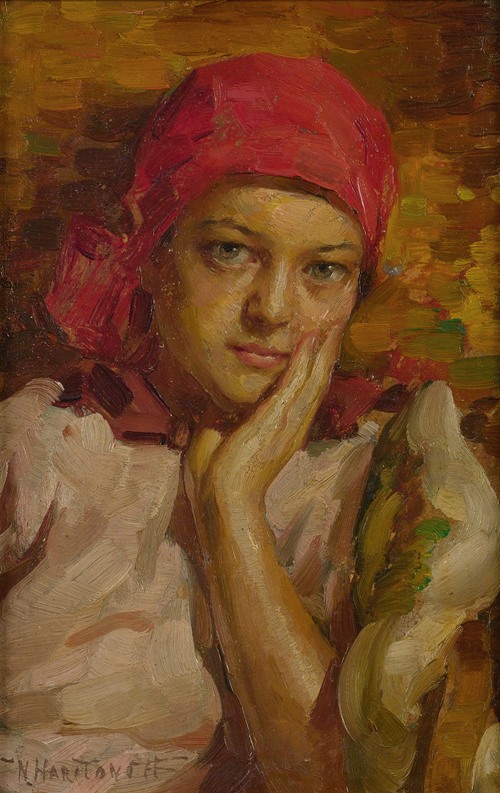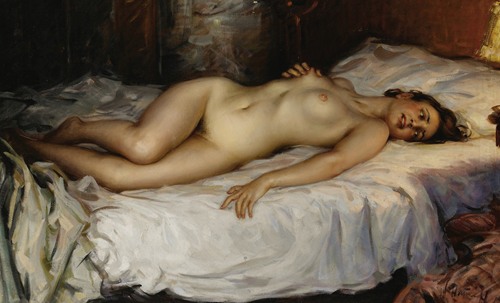

Born near Vologda in the Yaroslav district of Russia, Nicholas Haritonoff became a portraitist and landscape painter in a style that combined Impressionism and Realism.
At the age of fourteen, he decided to become an artist, which was against his family's wishes, so he entered the Valaam monastery where he studied art for two years. During that time, he painted primarily religious subjects. In 1901, he enrolled for eight years at the Imperial Academy of Fine Arts, and his teacher was the renowned Ilya Repin, primarily known for his unique blend of draftsmanship, painterly style, and realist subject matter.
In 1912, having been painting religious and historical genre scenes as well as portraits and landscapes, he married Maria who would become a key factor in supporting and promoting his works. He also earned prestigious honors including the Jubilee Prize of Princess Eugenia, which allotted two-thousand rubles so he could study in Europe.
He spent two years at the Royal Academy in Munich, Germany, and returned to St. Petersburg in 1914 to re-enter the Imperial Academy. During this period, he focused on portrait painting, and in 1916 did two oil portraits and several sketches of the Russian bass singer F.J. Schaliapine. He also exhibited at the Academy of Fine Arts and was a member of the Kuindzy Society and the Yaroslav Art Society.
During World War I, he served in the army as official painter of officer portraits for the War Department and painted a likeness of the Czar. He also continued with his own work, which was a variety of scenes including impressionistic landscapes to genre scenes and portraits.
In 1920, he emigrated to the United States and became an American citizen. He and his family settled in New York City where he earned a reputation for fluidly painted portraits. At that time, abstraction was becoming popular among New York artists, but he remained true to his realist style and to his roots in Russian humanism, which emphasized portraiture revealing the aspirations of human beings.
He began exhibiting at the National Academy in 1926, and from 1932 lived on West 67th Street in New York City. He painted landscapes from settings on Long Island, capturing the changing atmosphere of various seasons and various times of the day.
In 1939, he traveled to Laurel, Mississippi, where he painted portraits of the Rogers and Mason families who were prominent there in banking and other businesses. A newspaper article stated that he was planning on traveling westward through Texas, New Mexico, and Arizona to do additional portrait commissions.
He died in 1944 in New York City, leaving a widow, daughter, and son, Leon, who subsequently became the Director of Architecture at the Rockefeller Center where he created and produced the annual Christmas tree lighting spectacular.
Nicholas's work is in the collections of the Russian Art Museum in St. Petersburg, the Academy of Art in St. Petersburg, and the Lauren Rogers Museum in Laurel, Mississippi.

